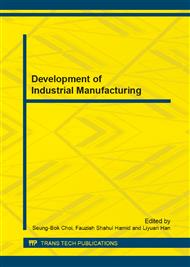p.491
p.495
p.499
p.504
p.509
p.512
p.518
p.523
p.527
Environmental Performance for Two Formwork System Types: Conventional Formwork & Steel Formwork System
Abstract:
Environmental aspect is one of the important criteria that define and determine sustainability performance for concrete formwork system. This study is aimed to compare the performance of the most common types of formwork system Conventional Formwork & Steel Formwork System in responding to environment category of sustainability development using questionnaire survey distributed among construction experts. The steel formwork system gets 11.5 score points while conventional formwork collects 7.8 points of total 19.4 score can be achieved. Overall steel formwork performance surpasses the conventional formwork while their score for formwork reusable element was adjacent with only 0.5 score difference meantime steel formwork had override conventional formwork in impact on local environment element. Generally steel formwork system may conceder as more environment friendly than conventional formwork especially in waste generation and using renewable material.
Info:
Periodical:
Pages:
509-511
Citation:
Online since:
February 2014
Price:
Сopyright:
© 2014 Trans Tech Publications Ltd. All Rights Reserved
Share:
Citation:


